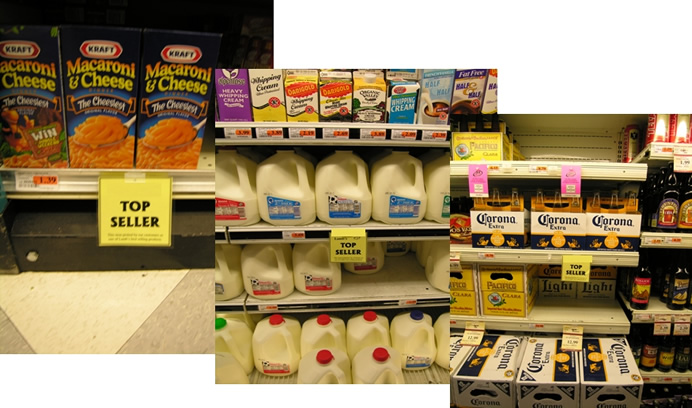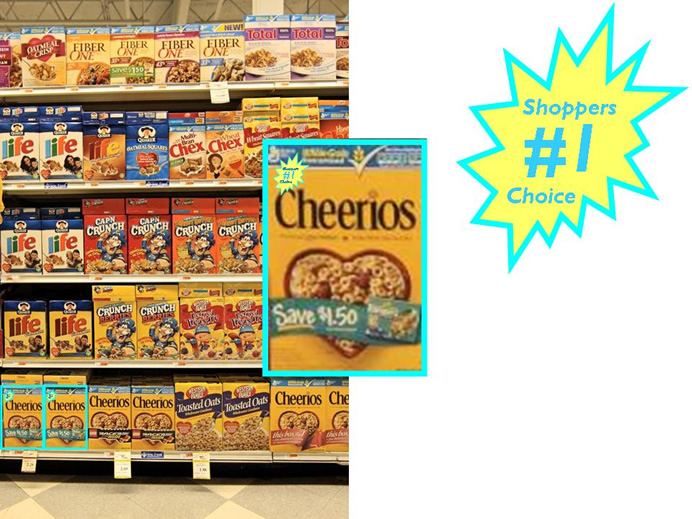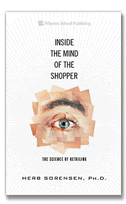For those not familiar, "the long tail" consists of all those items in the store which rarely, or possibly never, make a sale. This phenomena is true, whether you are considering the full store, a single department or category, or even a single brand. Some stuff is in the store, even though it really doesn't sell.
After presenting some stark data about the long tail, I will explain why it is so valuable, nonetheless. But first some hard observations. A friend who had moved into the position of VP of Marketing for a significant regional chain of supermarkets, noted to me that they were in the process of SKU rationalization of their stores. (Otherwise known as SKU-Rat, range management or whacking at the long tail - my tongue in cheek.) For this year, management had set as their goal to eliminate all items in the store that didn't sell a single copy in the entire year! The following year they were going to get really radical, and eliminate all those items that had not moved at least five copies in the entire year. NOW we are getting aggressive.
What did you think about all those tens of thousands of items in the store? Did you really think they were all selling to "someone?" The fact is that with 50,000 items in the store, 50% of those contribute less than 5% of the sales! That means you could simply remove half the items in the store and lose only 5% of the sales.
But wait! Do you really think that people would buy less with half as many choices? Don't you think shoppers would simply substitute something else to take the place of what they are mostly not buying now, anyway? In fact, the book The Paradox of Choice documents that giving shoppers excess choices actually suppresses sales. The typical household only buys 300 - 400 distinct items in an entire year, and only half of those on a regular basis, week in, week out, year after year. That half, the 150 - 200 items dominate the opposite end of the sales curve, the 3% of items that contribute a full third of the stores sales. These relatively few items constitute the Big Head, the dominant contributors to total store sales. (All figures cited vary to an extent from store to store.)
So why is all that long tail stuff in the store, anyway? Primarily because the brand suppliers are paying the retailer to put it there. So how about just stopping doing that? It's about as complicated as nuclear disarmament. In simplest terms, the brand can't just unilaterally surrender shelf space. But that is far from the whole story. After all, a number of retailers around the world have just chopped off the long tail, completely, and reduced total item count in the store to the few hundred level.
In every case I know of, big head stores have been very successful. However, in every case I know of, the big head also begins to grow a long tail! That is, what started as a radical shift to just a few hundred items, in a few years becomes thousands of items again. Aldi and Lidl have doubled their SKU count, Tesco's Fresh & Easy is increasing SKU count to counter Walmart's triple count compared to Fresh & Easy, and Stew Leonard moved from his original 800 items to a current 2000 items.
In fact, I am quite certain that any long tail store, could beat any big head store in direct competition. (Long tail stores always have a big head, too. And, as noted, big head stores tend to grow at least a vestigial long tail.) I'm certain the long tail store could win over the big head store for two very important reasons:
- The long tail is VERY attractive. That is, even though the shopper is not personally interested in all those tens of thousands of items, they are very pleased to be in a store that probably has everything they might need. The purpose of the long tail is to attract shoppers to the store, where, once there, they will buy mostly the big head. For example, I buy a few books a month, often from Amazon. A major reason is that I figure that anyone with 50 million books, probably has the ones I want.
- The problem with the long tail is not that it is in the store, but that retailers and brands use it to "hide" the big head. That is, the cardinal "sin" at retail is to fail to clearly demarcate the offer for the customer. Offering a wall of merchandise for the shopper to sort out, is no offer at all. Most shoppers are buying a relatively limited range of items. Most other shoppers are buying many of the exact same items - check your transaction logs. These are the few items whose sales are being suppressed in the hopes of selling more of the long tail. It is a very costly and failing proposition for brands and retailers.
Regardless of your type of store - or your category or brand - your greatest potential for additional sales is with those few items that are already selling well. For example, one store resorted to the simple expedient of telling their shoppers which those top sellers were:

And what was the result of these few dozen "top seller" tags scattered across the store, calling attention to all the shoppers' first choices? Something like a 54% average lift on these items; and a 4% lift the first quarter of 2009 for total grocery sales, reversing a long slide in sales beginning early in 2008.
The simple point of all this is that -
The Long Tail attracts shoppers to the store;
where they will mostly buy the big head - sell it to them!
Returning then to our title, The Misguided Bobbing of the Long Tail, the point isn't that trimming of the long tail is not in order. Rather, that the economic benefits of this trimming, at it's best, pale in significance in comparison to a focus on actively promoting/selling those few big head items. We have illustrated above one low-tech way of doing this for the whole store. However, for an individual brand, the package may be the best way for a product to shout out, "Buy me! Most other shoppers do!" Maybe something like this would work for you:

This is a suggestive illustration of how a brand might develop a motif that quite soon would educate shoppers as to the brand's own "Shoppers' #1 Choice." The burst announces the message, and the related "framed" package clearly demarcates the offer - essential for interrupting the scanning, filtering eye. The important thing is for the brand to NOT call out more than one item.
An example of #1 positioning by Coke:

Here's to your own GREAT "Shopping!"


